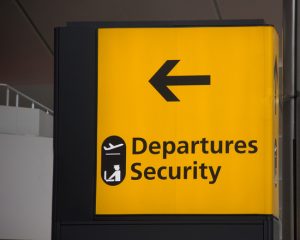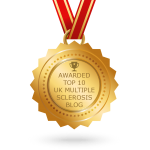Flying with a significant mobility problems

Flying with significant mobility problems
Flying with significant mobility problems is not an issue, trust me. There is plenty of assistance at hub airports and it is there to help. I have done a shed load of flights as a disabled person.
In 2008 I was at Gatwick doing an enormous walk to the departure gate and I fell over. It was a serious fall and everyone insisted that I use a wheelchair. When I admitted to myself that walking caused me to fall over there were fewer problems.
Getting started
Now I look at things through different eyes. Use www.skyscanner.net to find out what flights are available, buy the tickets and then contact the airline. The other option is to buy tickets direct from the airline. This is your decision.
Talk to the airline

Remember to talk to the airliine
Think carefully of the mobility aids you will need. I use The Trike (Travescoot), and rollator. The airline need to know the weight and dimensions of the aids that I am taking and full battery details. Talk to them at least two weeks before the flight.
Gone are the days when I could just roll up and board. The airlines want me to arrive at least 2 hours before take-off. The entire adventure needs planning down to the last catheter.
Flying with a significant mobility problems
Find out if there is a weight restriction for luggage. Also think about the medicines especially if there are needles/syringes and temperature restrictions.
I cannot walk to the departure gate so the airline allocates me a window seat. This is not up for debate or argument.
If I am travelling with The Wife she demands the window seat and I get the middle one * sigh *.
What do I take?
I need my Tropro Troja rollator and The Trike. These go into the hold as well as my luggage.
At the check-in I ensure everything that is going into the hold has a label. When I fold up the Travelscoot there are two parts so that is two labels. I must take the Lithium Ion battery into the cabin with me as hand luggage.
Security and passport control
I jump to the head of the queue. Whatever happens I do not feel guilty. This is one of the few advantages of a visible disability. I tell the security people about the wires for my FES and I also have a note from the clinic explaining about the FES. It has never been a problem.
Mere mortals have to slog it on foot
It can be a 20 minute walk from the duty free shops to the departure gate, I always want to drive The Trike. There are people who push me on a wheelchair and sometimes I am taken in an electric chariot.
When you land
I am the last person to disembark from the plane. I am reunited with The Trike when I leave the plane or very soon after. At passport control I am taken to the front of the queue and I never grin.
Don’t forget
I always take my EHIC (European Health Insurance Card) and a copy of my prescription. Also the Blue Badge card is an international sign of disability.
Tell us about your problems or victories when it comes to flying and airports.
July 2017



I have Primary Progressive MS. I am disabled but have flown only a few times since but I would love to travel more. Can you please tell me about what you referred to as “Blue Badge Card”? You stated that it is an international sign for disability.
Hello Glenda,
I am referring to the UK blue Badge card used in cars. It is recognised in many other countries.
Enjoy travelling but not every country is as inclusive as the UK especially when it come to accessible rooms in hotels
Good luck
My experience travelling to Malaga with Easyjet is exellent. Bristol with no flybridges uses an Ambylift and takes me up to the aircraft door where I am helped over the step and then I can make my own way to my seat by supporting myself on the seat headrests I pass on the way to my seat in rows 6- 9. Arrival in Malaga is easy my Travelscoot is delvered to the aircraft door, I fit the battery which I have carried on board (which gives me an extra carry on for all those bits and bobs needed during the flight ) I NEVER fold travelscoot down to go in the hold as I fear the baggage handlers would treat it like a pushchair and ‘hurl’ it into the hold, instead they seem to carry it in VERY carefully and I have seen them remarking to other handlers how light it is! I then just run down the disabled lane to passport control, zip through arrivals with my cabin bag and out of the airport in double quick time!
My return from Malaga is slightly easier as I go through special disabled security, motor through duty free to the departure gate.When called I get to go first on the airbridge, when I get to the plane door I remove the battery, they take the scooter and I board.
On arrival in Bristol we are asked to wait for the Ambylift, taken to arrivals and again wizzed though the speciall diisabled lane to passport control, then out of the airport and home. Simples! A big thank you to Easyjet and the Airport authorities. Regards, Peter.
Hello,
My experiences with Easayjet have been good as well. The Ambylift is run by the airport. If only all the airports were equally good and reliable.
I travel all over the world with my wheelchair and crutches. This year it’s St Lucia.
I’ve never really had a problem. Not had to queue, but even if we do I’m sat in my chair anyway.
I always get my wheelchair brought to the aircraft door, if they can’t I use the airports wheelchairs.
This year I’m taking my Twion wheels (power wheels for manual wheelchair). Not sure how that’s going to work just yet but hopefully okay.
I’m never going to let my Disabilty stop me going anywhere or doing anything.
Good luck with your travels. Twion wheels look cool. Can you detach the battery and take it into the cabin? Airlines do not want the battery in the hold
Hello,
Maybe I’ve been lucky or you have been unlucky. /Flying is a means of transoirt that requires infinite patience and a good book